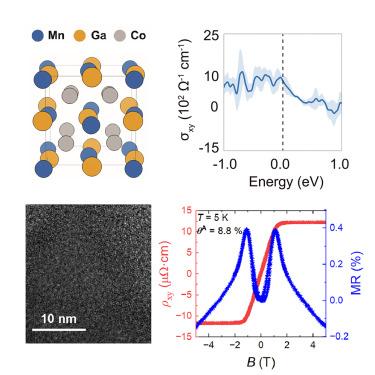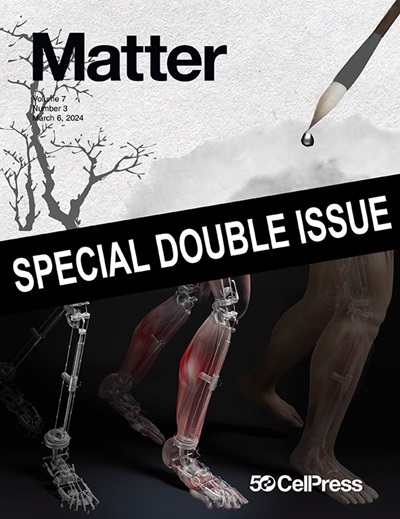Giant berry curvature in amorphous ferromagnet Co2MnGa
IF 17.5
1区 材料科学
Q1 MATERIALS SCIENCE, MULTIDISCIPLINARY
引用次数: 0
Abstract
In amorphous materials, long-range translational order breaks down, and k is no longer a good quantum number; however, some of the phenomena, for instance ferromagnetic interactions and a mechanism similar to the Berry curvature, can be preserved. Here, we demonstrate a giant Berry-curvature-induced anomalous Hall effect and anomalous Hall angle in amorphous Co2MnGa (a-CMG) thin films. Remarkably, the effect presents the same magnitude as high-quality crystalline CMG with the L21 structure. The elastic neutron scattering peak in a-CMG is centered close to the crystalline phase, indicating that the amorphous material presents similar local atomic environments and magnetic interactions. First-principles density functional theory calculations further show that the anomalous Hall conductivity arises only when the local environments in the amorphous structure are similar to the L21 phase. Our work strongly points to the application of low-cost, industry-compatible, and thermally stable amorphous topological materials in emerging electronic and spintronic applications.


非晶铁磁体Co2MnGa中的巨大浆果曲率
在非晶材料中,长程平动序被打破,k不再是一个好的量子数;然而,一些现象,例如铁磁相互作用和类似于贝里曲率的机制,可以被保留下来。在这里,我们证明了在Co2MnGa (a- cmg)非晶薄膜中存在巨大的berry曲率诱导的反常霍尔效应和反常霍尔角。值得注意的是,该效应与具有L21结构的优质晶体CMG具有相同的强度。在a-CMG中,弹性中子散射峰的中心靠近晶相,表明非晶材料具有相似的局部原子环境和磁相互作用。第一性原理密度泛函理论计算进一步表明,只有当非晶结构中的局部环境与L21相相似时,才会出现异常霍尔电导率。我们的工作强烈地指出了低成本、工业兼容和热稳定的非晶拓扑材料在新兴电子和自旋电子应用中的应用。
本文章由计算机程序翻译,如有差异,请以英文原文为准。
求助全文
约1分钟内获得全文
求助全文
来源期刊

Matter
MATERIALS SCIENCE, MULTIDISCIPLINARY-
CiteScore
26.30
自引率
2.60%
发文量
367
期刊介绍:
Matter, a monthly journal affiliated with Cell, spans the broad field of materials science from nano to macro levels,covering fundamentals to applications. Embracing groundbreaking technologies,it includes full-length research articles,reviews, perspectives,previews, opinions, personnel stories, and general editorial content.
Matter aims to be the primary resource for researchers in academia and industry, inspiring the next generation of materials scientists.
 求助内容:
求助内容: 应助结果提醒方式:
应助结果提醒方式:


